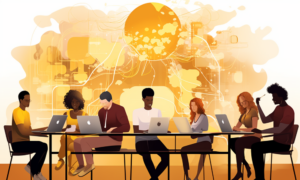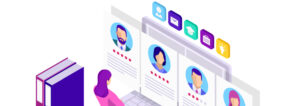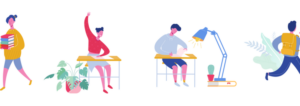Citi reveals how to maintain a continuous culture of learning
- 6 Min Read
Brian Murphy, Head of Learning & Leadership at Citi joined HRD Connect to discuss the importance of developing a learning culture. He also revealed how Citi’s “BeMore” campaign has helped to develop employee engagement. Simplifying learning is one of the key concepts within the Be More campaign – practically how can we achieve and help […]
- Author: Unzela Khan
- Date published: Jul 12, 2017
- Categories

Brian Murphy, Head of Learning & Leadership at Citi joined HRD Connect to discuss the importance of developing a learning culture. He also revealed how Citi’s “BeMore” campaign has helped to develop employee engagement.
Simplifying learning is one of the key concepts within the Be More campaign – practically how can we achieve and help with this as an HR or L&D function?
We need to simplify the learning experience for our people by putting the control of learning in their hands, allowing full personalisation.
We do this in three ways. Firstly by helping develop the right mind set as well as educating people around how learning happens and helping them to become agile learners. Secondly, giving people the tools and technology that will enable them to get what they need when they need it, personalised to each individual. Thirdly, working closely at the top of the house to encouraging a culture that sees learning as a critical part of everyday work, in the same way as professional athletes and high performing professionals have the discipline of being continuous learners.
Where can organisations start in helping employees shift from being a knowledge worker to a learning worker?
I think people are looking for help. The world is becoming more and more complex, the rise of robotics, AI and digital means that people are overwhelmed. Helping people learn how to learn is the biggest gift we have to give. Helping people to help themselves and become continuous learners is the gift that keeps on giving. This requires L&D and HR professionals to shift their mind set and skill set to be story-tellers, marketers and facilitators of employee-centric learning. Sometimes letting go of what content we think people need and helping them develop their own knowledge management and learning skills is the best help we can give.
What can companies do to ensure a continuous culture of learning is in place?
First they need to show that the company values learning, and sees this as part of everyday work. Continuous improvement is expected, supported and encouraged. Story-telling and marketing campaigns are obvious ways of signposting this and permissioning it. You also need to develop a learning culture and this takes longer. This can be done top down through leader led initiatives and changes to how you think about people practices like performance management, reward and promotion. But also bottom up through social engagement and building learning communities. Ultimately the stories people tell themselves form culture so learning needs to start to feature in these stories. It’s about a learning consciousness – where all people are expected to take accountability not just for their own learning, but also for the learning and development of their colleagues and teams.
When you last joined us, you said “When people learn continuously as part of work, they outperform others by 25%” what sort of tools and resources can a HR team provide to ensure this?
There is some great research out there to show why continuous learning has a much bigger impact on business performance than traditional approaches alone. Building a robust business case, using the key priorities for the business is key. The impact of learning needs to be the same as the performance driver for the business. Maturity maps are a great tool to understand where you are on the journey and helps to signpost where to focus efforts to develop your learning strategy. One tool we use is the Manager 3 questions card – that helps transform 1-to-1 meetings into development conversations. We also use 10 min reflection per day, after action reviews, etc.
How has the #BeMore campaign helped in employee engagement, and what does the future of #BeMore look like?
We’ve seen a steady improvement in our levels of engagement which I’m really delighted with. We’ve also seen a shift away from a reliance on traditional training and a ‘push’ – towards ongoing learning supported by technology and tools that are learner-led and also social learning through communities of practice. #BeMore will continue to support the same fundamentals, supporting the development of a continuous learning culture that empowers our people to own their own development and performance improvement. However although L&D has been behind the scenes driving this work, the next phase will see business managers and employees taking on the mantle as the owners and drivers of the work. That’s what excites me. It takes on a life of its own, the work morphs and is owned by the community. That’s when you know you are helping to change the company. We’re already seeing that. It’s very exciting.
On the 22 June you launched a 30 day development challenge, what did this consist of and how can the affects stay in place after the 30 days?
The challenge compromises of 30 micro-challenges (taking 10 minutes to complete each day) over 30 days. People complete the daily action, reflect and share their learning on our internal jive-based collaborate system, and then we have curated some content for them to explore the topic and learn more. All 30 challenges/daily actions are designed to develop ‘muscle memory’ for behaviour change over the 30 days. Honesty, Agility and Curiosity are the behaviours we are focused on developing as a company. It’s been incredibly popular with over 6,000 employees taking part so far. The online conversations and sharing is the best part where our people share their experiences and helping one another with their challenges.
One of the ways we kicked off the challenge this year was last year’s participants telling us what practices they still had in place. These included giving and receiving feedback, reflection, positivity, bravery and creative practices.
In her ‘Daring greatly’ manifesto, thought leader Dr Brene Brown stated, “When learning and work are dehumanised, when you no longer see us and no longer encourage our daring, or when you only see what we produce or how we perform, we disengage and turn away” To what extent do you agree with this, and how can we encourage this daring mentality?
I completely agree with this! Brene Brown made a huge impact when she came and spoke to us. Being vulnerable and learning from mistakes are not traditional traits of the financial services industry. However the industry has been going through a lot of change. In order to innovate for our clients we realise we need to try new things, take smart risks, experiment, fail and learn I order to grow. This means we need leaders who embrace diverse and inclusive teams and who encourage our people to not be afraid of failure, to ‘dare greatly’. It’s great to see the shift as our leaders create the conditions for this to happen and innovation to take place. It’s a journey and we’re making good progress. That’s what the #Bemore programme has been all about, Citi having a very adult to adult conversation with our people. No corporate speak, just thinking about our people as whole human beings. We are human beings and not human doings after all.








